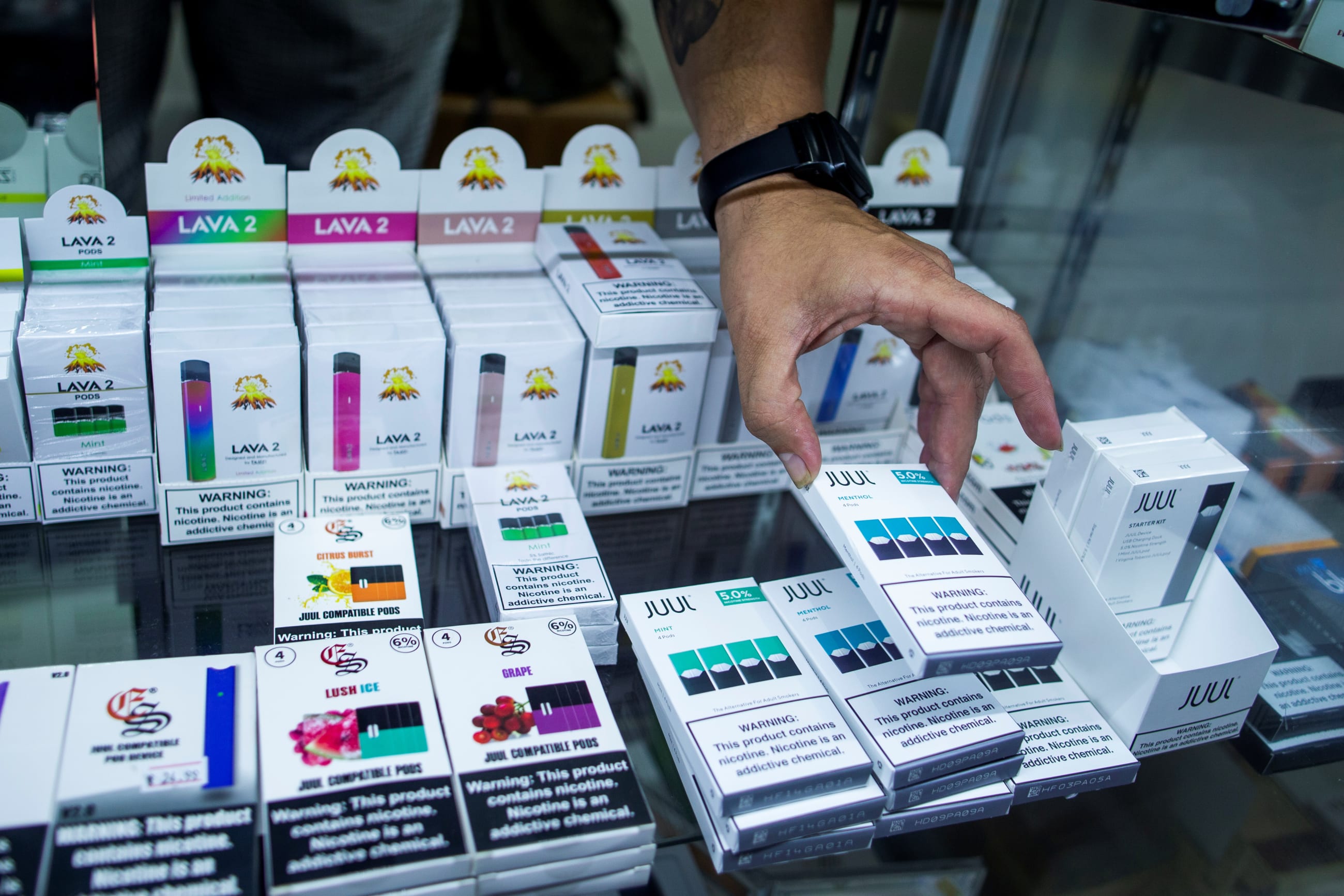On April 29, the FDA vowed to ban menthol in cigarettes. FDA Acting Commissioner Janet Woodcock said the ban would reduce youth initiation, help smokers looking to quit, and address health disparities among people of color, poor people, and LGBTQ people—all of whom are more likely to smoke menthols. The ban on menthol cigarettes is a significant step in the right direction to counteract decades of aggressive, targeted tobacco marketing to youth and marginalized groups. However, the FDA missed an opportunity to go further by banning flavors in all nicotine-containing products.
For decades, Big Tobacco has used flavored cigarettes as a strategy to hook women, young people, and Black Americans, knowing that flavors such as menthol are an attractive feature to inexperienced smokers and are perceived as less harmful. This strategy has carried over into the marketing of e-cigarettes in the United States and around the world.
More than 8 out of 10 current youth e-cigarette users in the United States vape non-tobacco flavors
Big Tobacco has also heavily marketed e-cigarettes in low- and middle-income countries as harm reduction tools without providing evidence on effectiveness or long-term safety, often arguing that smokers should have safer options. However, marketing tactics in LMICs are far from tailored to smokers. Rather, as in the United States, they appear designed to appeal to youth.
E-cigarettes are one example of a more recent category of tobacco product in the United States: electronic nicotine delivery systems (ENDS). Increasing evidence shows that ENDS, particularly flavored ones, can be gateways to cigarette use among young people, much like menthol cigarettes. Currently, a majority of e-cigarette users in the United States and Canada, and more than 8 out of 10 current youth e-cigarette users in the United States vape non-tobacco flavors, including fruit, mint/menthol, and candy. Those who use flavored e-cigarettes report greater satisfaction and are more likely to continue using e-cigarettes with greater frequency.
Countries Where ENDS are Banned, Regulated, or Unregulated
In 2019, the World Health Organization advised all countries that had not banned ENDS to regulate e-cigarettes as harmful products, and to consider regulating them as other tobacco products, warning that e-cigarettes have the power to undermine tobacco control efforts. However, in many places e-cigarettes still remain completely unregulated. And where they are regulated, there has been weak implementation and enforcement of existing ENDS restrictions.
Strict regulation of ENDS should be the first order of business in places where the product is available with little to no restrictions. To prevent targeting of racial and ethnic minority groups, however, regulators must be cautious when drafting regulations on ENDS flavors to place the legal burden upon retailers rather than criminalizing individuals. This will enable governments to protect the public from unknown risks and provide more time for the public health research community to develop a better understanding of the risks of these products.
Most Recent Year of ENDS Use Data
In addition, more studies are needed to inform ENDS regulation and prevent the uptake of e-cigarettes among youth, especially during the ongoing COVID-19 pandemic. Although some research during the pandemic has shown reduced e-cigarette use, preliminary data collected in 2020 show that teens and young adults who use e-cigarettes have a 5 to 7 times greater likelihood of being infected with COVID-19 and suffering worse outcomes. These findings highlight the pressing need to mitigate harm to the lungs and reduce e-cigarette use in youth until we better understand the relationship between e-cigarettes and COVID-19.
Teens and young adults who use e-cigarettes have a 5 to 7 times greater likelihood of being infected with COVID-19
E-cigarettes put millions of youth at risk and threaten decades of progress made in reducing tobacco use, which is currently one of the leading preventable risk factors for death globally. Surely the easiest way to reduce tobacco use is to prevent it in the first place; it seems like a no-brainer to eliminate all flavored e-cigarettes, which attract new users and can be a gateway to cigarette smoking.
The only way to deal with the threat posed by e-cigarettes is to extend the proposed U.S. ban on menthol to all tobacco products, including e-cigarettes, and encourage all countries to follow WHO recommendations on regulating e-cigarettes globally.

ACKNOWLEDGEMENTS The authors would like to thank Gabriela Gil, Joanna Whisnant, and Erin Mullany for supporting the production of this article, and the IHME DEI Council, Maria Carmona, Adrienne Pizatella, and Marissa Reitsma for providing feedback.
EDITOR'S NOTE: The authors are employed by the University of Washington's Institute for Health Metrics and Evaluation (IHME). IHME collaborates with the Council on Foreign Relations on Think Global Health. All statements and views expressed in this article are solely those of the individual authors and are not necessarily shared by their institution.












